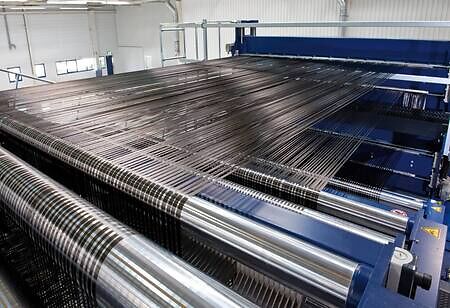
Carbon Fibers Out of Petroleum Residues?


It’s no secret that limiting climate change to well below two degrees Celsius will require unprecedented aggressive decarburization of global electricity generation and deployment of demand-side low-carbon energy technologies in the coming decades. As the world struggles to increase vehicle efficiency to curb greenhouse gas emissions, amidst expanding the range of electric vehicles, the search is on forever-lighter materials strong enough to be used in the bodies of cars. Clearly why carbon fiber-based lightweight materials, similar to those used in certain tennis rackets and bicycles, can be fit for the job, as they are known to combine exceptional strength. But the drawback is that they are more expensive to produce compared to structural elements made from steel or aluminum. Now, researchers at MIT have come up with a way of making these lightweight fibers out of an ultra-cheap feedstock: the heavy, gloppy waste material leftovers from refined petroleum. These are materials that refineries supply for low-value applications such as asphalt or eventually discard as waste. Carbon fibers play a versatile role in today’s automotive world.
Major Roles Played by Carbon Fibers in Today’s Life
Not only is the new carbon fiber cheap to make, but it also poses compressional strength compared to traditional carbon fiber materials. It is quite suited in the sense that it can be employed in load-bearing applications. Rewinding about four years in the past gives a clear picture of the same when the research commenced in response to a request from the Department of Energy, which sought ways to make cars more efficient and reduce fuel consumption by lowering their overall weight. Therefore, looking at the same model car now, it's significantly heavier compared to 30 years ago. Its weight has increased over 15 percent within the same category.
Moreover, heavier cars require bigger engines, stronger brakes, etc. Therefore, reducing the weight of the body or other components creates a ripple effect that produces additional weight savings. Another reason for the DOE’s push is to not only have lightweight structural materials to match the safety of today’s conventional steel panels but should also be made cheaply enough to potentially replace steel in standard vehicles.
Composites made from carbon fibers are not a new idea, but by far, in the automotive world, they have only been used in a few expensive models. The new research aims to turn that around by providing a low-cost starting material and relatively simple processing methods.
Carbon fibers of the quality needed for automotive use cost at least $10 to $12 per pound currently and can be way more, up to hundreds of dollars a pound, for specialized applications like spacecraft components. That’s about 75 cents a pound for steel, or $ 2 for aluminum, though these prices fluctuate widely, and the materials often rely on foreign sources. At those prices, making a pickup truck out of carbon fiber instead of steel would roughly double the cost.
How are the Carbon Fibers Made?
Carbon fibers are typically made from polymers (such as polyacrylonitrile) derived from petroleum but use a costly intermediate step of polymerizing the carbon compounds. The cost of the polymer can account for more than 60 percent of the total cost of the final fiber. Instead of using a refined and processed petroleum product to start with, the team’s new approach uses what are essentially the dregs left after the refining process, a material known as petroleum pitch. According to Nicola Ferralis, Department of Energy, MIT, the pitch, sometimes called the bottom of the barrel, is incredibly messy. It’s a hodgepodge of mixed heavy hydrocarbons, which makes it beautiful since there’s immense chemistry that can be exploited. That makes it a fascinating material to start with.
It’s useless for combustion; although it can burn, it’s too dirty a fuel, especially with tightening environmental regulations. An alternative source of pitch, which the team also tested, is coal pitch, a similar material that is a byproduct of coking coal, used, for example, for steel production. That process yields about 80 percent coke and 20 percent coal pitch, which is basically a waste.The process that one needs to make carbon fiber from the pitch is extremely minimal, both in energy requirements and processing.
Asmita Jana, a Research Scientist at MIT, explains that the pitch is made of these heterogeneous sets of molecules, and changing the shape or size, you would expect the same with properties, whereas an industrial material needs to have very consistent properties.
By carefully modeling the ways bonds form and crosslink between the constituent molecules, Jana developed a way of predicting how a given set of processing conditions would affect the resulting fiber properties.
Jana Says, “we were able to reproduce the results with startling accuracy, where companies could take those graphs and predict” characteristics such as density and elastic modulus of the fibers.”
The experimentations were done by research scientists, resulting in carbon fibers that could be made not only strong in tension, as most fibers are, but also strong in compression, meaning they could potentially be used in load-bearing applications. This opens up entirely new possibilities for the applicative value of these materials.
Ferralis says, “DOE’s call was for projects to bring the cost of lightweight materials down below $5 a pound, but the MIT team estimates that their method can to do better than that, reaching something like $3 a pound, though they haven’t yet done a detailed economic analysis. The new route we’re developing is not just a cost effect. It might open up new applications, and it doesn’t have to be vehicles. Part of the complication of making conventional fiber composites is that the fibers have to be made into a cloth and laid out in precise, detailed patterns. Is to compensate for the lack of compressive strength. It’s a matter of engineering to overcome the deficiencies of the material, but with the new process all that extra complexity would not be needed.”